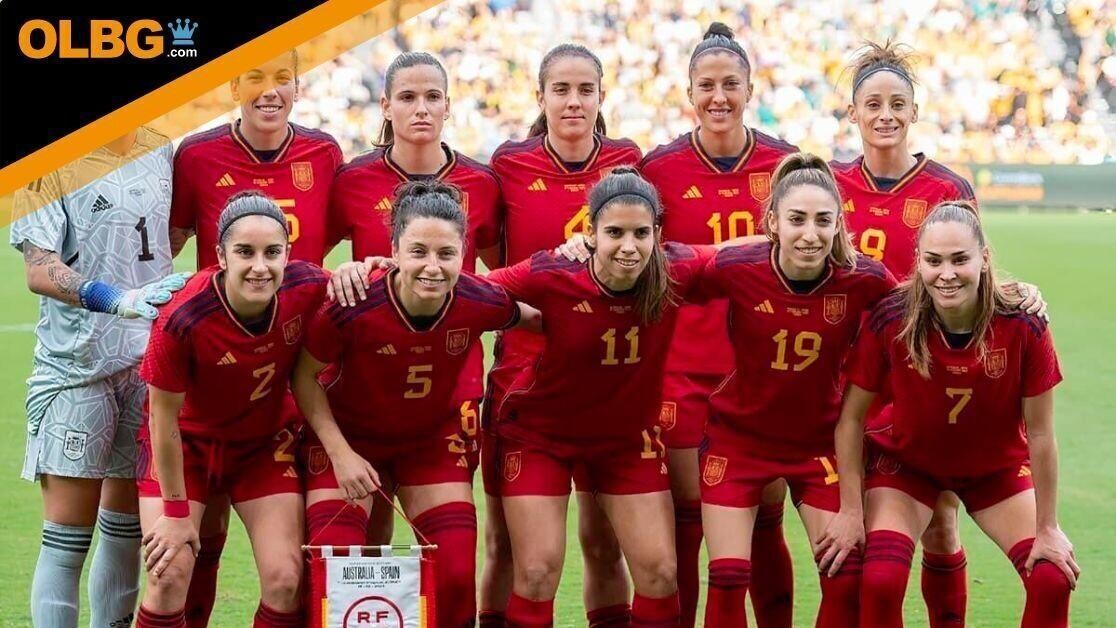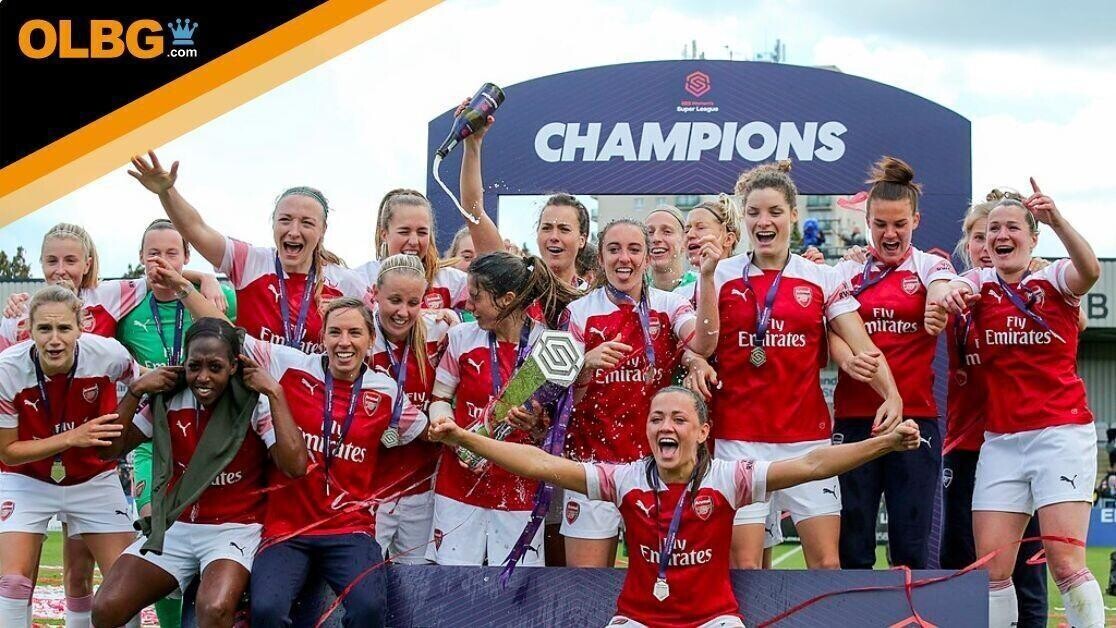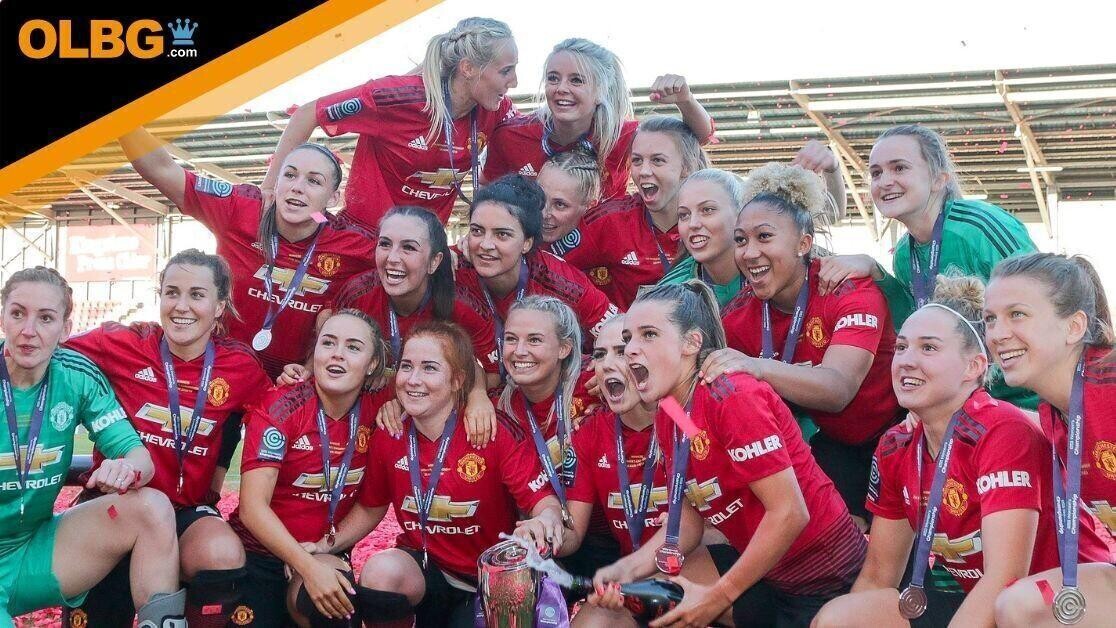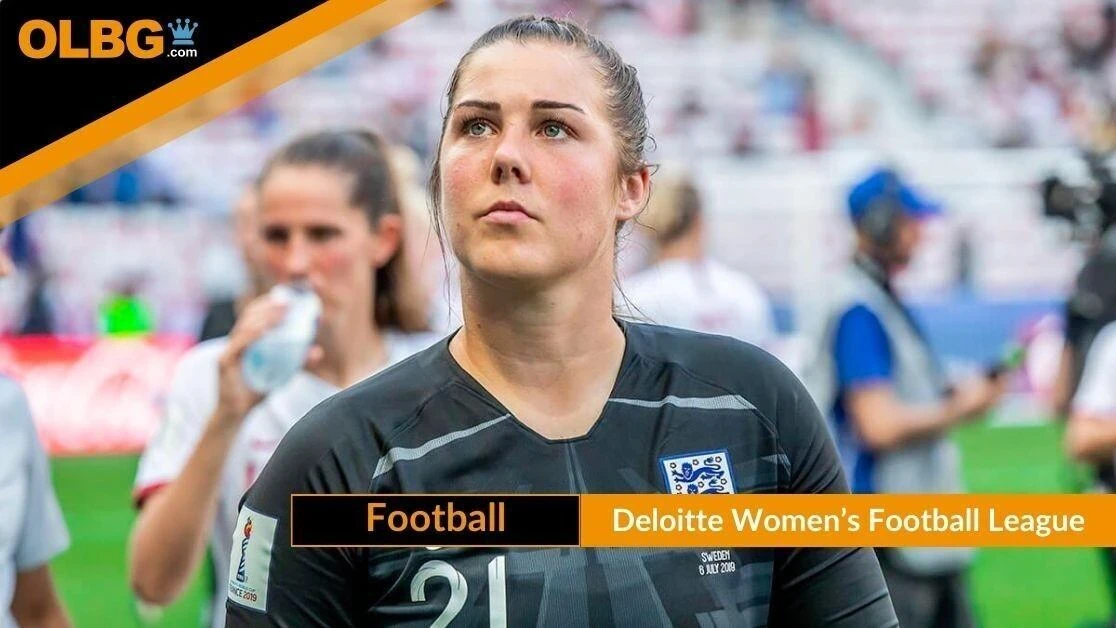
Your data guide to football betting, Dan Tracey shows you where the numbers point before the market catches up.
In the wake of monumental international tournaments, the Deloitte Women’s Football Money League has emerged as a pivotal indicator of growth, spotlighting the remarkable ascent of women's football on the global stage. This article delves into the findings of the 2023 report, offering readers a comprehensive understanding of how major clubs are leveraging this surge in popularity to create a lasting impact. Discover the significant strides in women's football and why this moment matters for fans, players, and investors alike.
⚽🌍✨Women's Football Soars: A Global Phenomenon!✨

Breakthrough of Women's Football: Smashing Ceilings and Scoring Goals
Deloitte Women’s Football Money League 2024
After back-to-back summers of Women’s international football, the European Championship and World Cup staging have placed this version of the game under its biggest-ever spotlight. With a feel-good factor in the air, it is up to clubs to generate more.

NurPhoto // Getty Images
Especially within England as the Three Lionesses managed to not only conquer Europe but were one step away from conquering the world a year later and with Mary Earps also winning BBC Sports Personality of the Year in 2023, it is a further sign of progress as far as the women’s game.
With the international theatre of football war seemingly in rude health, there is always the question as to how that translates to Europe’s biggest clubs. One constant measure of that translation comes in the shape of the annual Deloitte Women’s Football Money League.
A league won via the spreadsheets instead of the field of play and thanks to Deloitte’s forensic accounting abilities, they have drawn up the 15 European clubs that have generated the most revenue across Women’s football in the past 12 months.
| Club | Revenue € |
|---|---|
| Barcelona | 13.4 |
| Manchester United | 8 |
| Real Madrid | 7.4 |
| Manchester City | 5.3 |
| Arsenal | 5.3 |
| Chelsea | 4.1 |
| PSG | 3.7 |
| Eintracht Frankfurt | 3.6 |
| Bayern Munich | 3.1 |
| Tottenham | 2.6 |
| Liverpool | 2.1 |
| Benfica | 1.5 |
| Everton | 1.3 |
| West Ham | 1.2 |
| Juventus | 1.2 |
At the top of the pile is Barcelona who have generated €13.4m in revenue across the 2022/23 season, €5.4m more than the highest English Women’s Super League representative Manchester United and a further €0.6m than fellow Spanish giants Real Madrid.
Barcelona is clear in the distance of both Manchester United and Real Madrid, the trio clear of the next three teams in the list and for positions four to six in the 2024 Money League, they are monopolised by English clubs.
🔝💰Barça Leads the Pack in Women's Football Revenue! 💫
No difference between Manchester City and Arsenal in joint fourth at €5.3m each, some €1.2m more than Chelsea in sixth. The Women’s Super League showing its collective financial might across Europe with four clubs positioned in the top six.
While it is collective power that also comes into focus and with the average revenue earned across the top 15 increasing €4.3m from €2.6m, it means a year-on-year overall rise of 61% - adding further credence to the growth in profitability across the continent.
Revenue Growth year on Year
Of course, these figures are in nothing more than isolation at the moment and the best way to provide further context is by comparing them to the figures in last year’s Women’s Money League:
| Club | 2022/23 Revenue € | 2021/22 Revenue € | Difference |
|---|---|---|---|
| Barcelona | 13.4 | 7.7 | 5.7 |
| Manchester United | 8 | 6 | 2 |
| Real Madrid | 7.4 | 1.4 | 6 |
| Manchester City | 5.3 | 5.1 | 0.2 |
| Arsenal | 5.3 | 2.2 | 3.1 |
| Chelsea | 4.1 | 1.8 | 2.3 |
| PSG | 3.7 | 3.6 | 0.1 |
| Eintracht Frankfurt | 3.6 | No Entry | - |
| Bayern Munich | 3.1 | 1.7 | 1.4 |
| Tottenham | 2.6 | 2.1 | 0.5 |
| Liverpool | 2.1 | 1.2 | 0.9 |
| Benfica | 1.5 | No Entry | - |
| Everton | 1.3 | No Entry | - |
| West Ham | 1.2 | 1.1 | 0.1 |
| Juventus | 1.2 | No Entry | - |
Here we can see that Barcelona not only topped this year’s table but also saw their year-on-year revenue increase by €5.7m and although that is nothing to be sniffed at, their El Clasico rivals have gone slightly better.
Although Real Madrid has always been known as a financial powerhouse within the realm of the men’s game, they have not always had that stature when it comes to their women’s team. However, that stature is starting to increase after their revenues rose by €6m in the space of 12 months.
The largest year-on-year revenue increase of all the 15 clubs in the table and apart from Barcelona, Arsenal are the only club to see more than €3m worth of increases. €3.1m to be precise and something that shows that although increases are merited, they are not easy to find.

While an additional note must go to the quartet of Eintracht Frankfurt, Benfica, Everton and Juventus. These four teams did not even make the final 15 in last year’s Women’s Money League, they are now a part of this special group.
Further praise must go to Eintracht Frankfurt though and not only did they find their way in the top 15 this year but they also leapt above German kings Bayern Munich. €3.6m in terms of revenue for Frankfurt’s finest placing them in eighth, one position above their Munich-based counterparts.
Where does the Money Come From
Another way that this financial data can be analysed is by looking at where exactly it has come from and this has be done with three separate categories:
- Matchday
- Broadcast
- Commercial
| Club | Revenue € | Matchday | Broadcast | Commercial |
|---|---|---|---|---|
| Barcelona | 13.4 | 21.64% | 14.93% | 63.43% |
| Manchester United | 8 | 9.70% | 5.97% | 44.78% |
| Real Madrid | 7.4 | 5.22% | 6.72% | 43.28% |
| Manchester City | 5.3 | 6.72% | 5.97% | 27.61% |
| Arsenal | 5.3 | 23.13% | 12.69% | 3.73% |
| Chelsea | 4.1 | 9.70% | 14.18% | 5.97% |
| PSG | 3.7 | Undisclosed | Undisclosed | Undisclosed |
| Eintracht Frankfurt | 3.6 | 2.99% | 3.73% | 20.15% |
| Bayern Munich | 3.1 | 13.43% | 0.75% | 8.96% |
| Tottenham | 2.6 | 2.24% | 2.99% | 14.18% |
| Liverpool | 2.1 | 2.24% | 2.99% | 11.19% |
| Benfica | 1.5 | 0.75% | 7.46% | 3.73% |
| Everton | 1.3 | 0.75% | 3.73% | 5.22% |
| West Ham | 1.2 | 0.75% | 2.99% | 5.22% |
| Juventus | 1.2 | 0.75% | 5.22% | 2.99% |
In this table, we can see that Barcelona’s marketing team has been doing a lot of the heavy lifting and with 63.43% of their 2022/23 revenue from their commercial deals, it highlights just how important sponsorship is within the women’s game.
Not only that, but it also highlights the calibre of sponsorships is improving with each year and with more blue-chip companies prepared to invest in this area of the beautiful game, the lifeblood of the sport is now beating even faster.
Then again, the same kudos can be given to both the Manchester United and Real Madrid marketing teams as well. 44.78% of United’s revenue came via the commercial department, slightly more than Madrid’s 43.28%.

By James Boyes from UK - Man Utd Women 5 Lewes FC Women 0 11 05 2019-701.jpg, CC BY 2.0, https://commons.wikimedia.org/w/index.php?curid=85704417
Those three clubs acting as the standard bearers for commercial deals but what about matchday revenue this is where Arsenal manage to fly the flag. With strong attendance and sales for merchandise and food, this equates to 23.13% of their overall revenue – the highest of the 15 clubs.
Just under 1.5% more than Barcelona in second and third when it comes to the highest proportion of revenue from a matchday basis, it is Bayern Munich who have managed to pick up the proverbial bronze medal.
As for broadcasting, it makes up 14.93% of Barcelona’s latest revenues, just under 1% more than that of Chelsea and just over 1.5% more than that of Arsenal in third. The fact that it makes up a considerable portion of both London club’s revenues suggests a strong TV deal in the UK.
📺⚽ Broadcast Breakthrough: Barça Leads, UK Clubs Shine! 🌟
With that said, Women’s football does not necessarily struggle for television coverage in the UK in terms of quantity, it is more a case of quality timeslots and with these being so sparse, scheduling is an ongoing problem.
One way to potentially work around this problem is to make use of the 3 pm blackout which currently protects grassroots football in the men’s game. If there was a permanent slot of the same time, this would arguably attract more viewers because the scheduling would become commonplace.
If you know when something is on, you are more likely to watch it. That is the theory and it is a theory that largely works. Unfortunately, the Women’s Super League has to currently work around the Premier League scheduling and take whatever gaps in the weekly schedule are left.
What's it got to do with the Men's Game?
Another thing to consider is whether the women’s game has grown because of ever-stronger links with the men’s. Whereas before clubs would run independently of each other, they are now operating under the same umbrella and this is highlighted by looking at the men’s top 15.
| Club | Revenue € | Also Women's Top 15 |
|---|---|---|
| Real Madrid | 831.4 | Y |
| Manchester City | 825.9 | Y |
| PSG | 801.8 | Y |
| Barcelona | 800.1 | Y |
| Manchester United | 745.8 | Y |
| Bay | 744 | Y |
| Liverpool | 682.9 | Y |
| Tottenham | 631.5 | Y |
| Chelsea | 589.4 | Y |
| Arsenal | 532.6 | Y |
| Juventus | 432.4 | Y |
| Borussia Dortmund | 420 | N |
| AC Milan | 385.3 | N |
| Inter | 378.9 | N |
| Atletico Madrid | 364.1 | N |
Whereas Barcelona made €13.4m worth of revenue for the women’s team during the 2022/23 season, that figure was dwarfed by their male counterparts. The Camp Nou outfit generated €800.1m and that was only the fourth-highest figure on the men’s list.
In fairness the comparative values of men’s versus women’s revenue is not the way to look at this, instead, it is comparing what teams are on which list and how much of a symmetry there is between the two.
⚽💰Barça's Revenue Tale: Bridging the Divide Between Men's and Women's Football⚽🚀
In this case, the top 11 team in the men’s list can also be found nestled within the top 15 of the men’s and this further highlights that the branding of these football institutions is now helping the women’s game grow further.
Critics of this would argue that the women’s game has not got its own identity and is only piggybacking off of success elsewhere but at the same time, the growth has to come from somewhere and we have all seen how difficult it was in the past.
Now the key battle is to get supporters to support the club as a whole, if you are already a supporter of the men’s team, then why not take that fandom over to the women’s as well? That is the question that the decision-makers are trying to get fans to answer in a bid to help growth further.
Of course, with the top 15 teams in the 2024 Deloitte Women’s Money League all registering at least €1m in revenue over the past 12 months, this is something to be celebrated. The clamour for more will always be there, but the progress already made should not be forgotten either.
Editorial Information and Sources
Data from:
Correct as of 9th Feb 2024.



